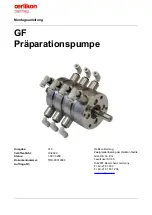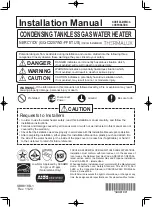
25
15. The closed circuit of the system is at ambient condition and the system is now ready for hand over.
Notes:
It is absolutely imperative that all of the Nalprep IV cleaning solution is purged from the
system prior to the introduction of corrosion inhibitor. Residual Nalprep IV means the system
has not been adequately drained/flushed and will still contains suspended material/corrosion
product. Residual Nalprep IV may also negatively impact the performance of the corrosion
inhibitor subsequently applied as well as act as potential food source for bacteria leading to
microbiological control issues in the future.
The waste produced by the cleaning procedure will contain approximately up to 500ppm of
o-PO4 and have a pH 6.5. The waste may also be turbid and contain much suspended iron. If
the volume of the system is large, the fate of the waste needs to be considered and a once-off
discharge permit obtained from the sewer provider. If required, the waste generated may have
the pH increased to pH 7.0 by the addition of a caustic product once the waste is out of the
chilled system.
When a system has been left idle during works, there exists the potential for some
microbiological contamination to be retained through the cleaning process. Therefore a
heightened level of microbiological monitoring is often required up to a few months after
inhibitor has been added to ensure that bacterial populations are not allowed to develop.
Please check with local EPA with regards to the disposal of the passivation chemicals. Contact
local Nalco representative.
FILLING AND PRESSURE TESTING OF PRIMARY CIRCUIT
For best results, pressure testing of the system should be conducted late in the evening when there is little
solar radiation and the collector array (if fitted) can remain flooded under pressure for around 60 minutes.
The maximum pressure that is allowed for testing of the system is 500 kPa (5 bar). When pressure testing
is to be conducted using mains pressure, ensure the mains pressure is reduced to 500 kPa (5 bar) before it
enters the system. Where the mains pressure is lower than the desired operating pressure of the system a
pressure testing pump (not supplied) shall be used for this purpose.
WARNING:
At no stage in the filling of the closed circuit should mains pressure greater than 500kPa be applied to
the storage tank without a pressure reducing valve.
1. Fit a pressure gauge capable of measuring up to 600kPa to the inlet of the system.
2. Open all isolation valves in the system, including any air bleed valves.
3. Connect the system to the mains water supply and begin to fill the system.
4. When water overflows from the air bleed valve, reduce the incoming water flow rate by slightly closing
the incoming water supply isolation valve.
5. Close the water supply isolation valve fully to stop the incoming water, and then close the air bleed
valve.
6. Now, slowly open the water supply isolation valve and continue filling. Check the pressure gauge
attached. When the pressure reaches 200kPa (2 bar), close the water supply isolation valve and allow
the pressure to stabilise.







































